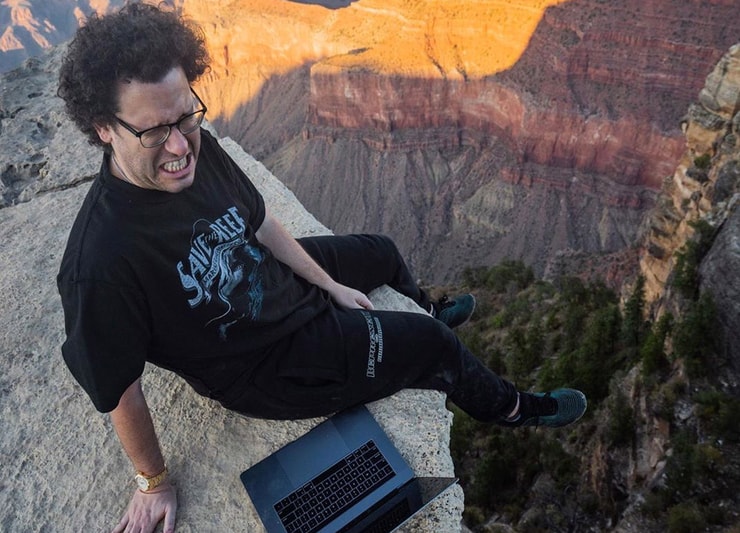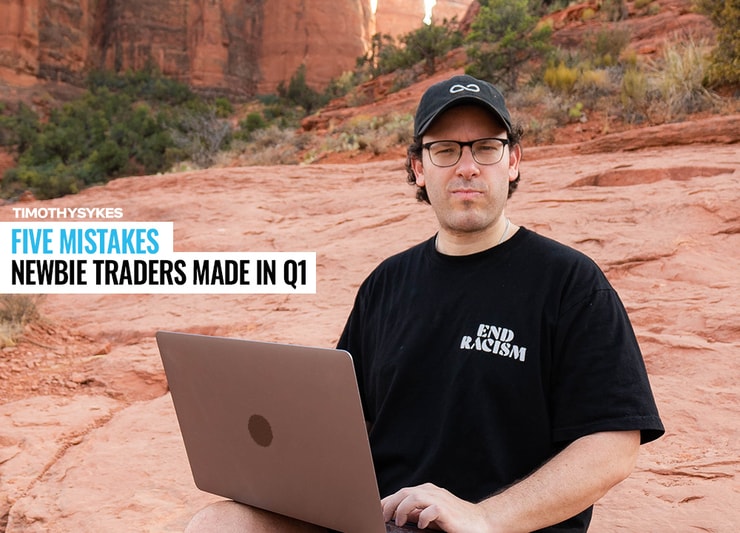We’re just one day away from closing the books on Q1 2023.
25% of the trading year is behind us.
If you’re struggling…don’t worry… you have ample time to turn things around.
But you must start now.
After +20 years of trading and over a decade of mentoring…I’m very familiar with the roadblocks newbie traders face.
More importantly, how to correct them.
Today I will talk to you about the five most common mistakes I saw…and the steps to fix them.
Table of Contents
Mistake #1: Forcing The Issue

2025 Millionaire Media, LLCQ1 started off hot, with the Nasdaq experiencing a monster rally largely due to the January Effect. However, things started to cool down fast in February and March.
As traders, we must understand that we can only trade the opportunities before us. If the action slows down…that doesn’t mean we must work harder to find plays.
It means we have to become even more patient and selective.
Early in March, I found myself down. It’s because I was forcing the action. I was taking setups that weren’t ideal…and trying to create something out of nothing.
Luckily, I managed to stay disciplined and cut my losses quickly. But I should have known better that things were slowing down.
I always tell my students…there’s a time for learning and a time for earning. We are in one of those learning phases. Spend this time developing your skills, and when the action heats up again, you’ll be happy you put in the work.
Mistake #2: Not Sticking To A Trading Plan

2025 Millionaire Media, LLCA trading plan should include two targets: a profit target and a stop-loss target.
Why is this important?
Because without a target, you’re more likely to get emotional about a trade. For example, let’s say you enter a trade, and suddenly, it starts to move against you.
Most newbie traders hate seeing red on their screens and accepting they were wrong. So they’ll hang on, hoping the trade reverses and goes their way.
However, they are looking at even bigger losses if it doesn’t. And instead of getting out at a small loss…they are hoping at the very best they can get to break even.
This cycle of thinking is dangerous. Take a few bad losses, and you can get wiped out.
It also shows no discipline…which is a MUST if you want to have long-term success in this game.
I always teach my students to cut losses quickly.
More Breaking News
- SaverOne: The Latest Updates and Market Trends
- TeraWulf Stock Surges Amid Strategic Collaborative Shift
- Trip.com Group Strengthens Investment Footprint with MakeMyTrip Share Repurchase Deal
Taking losses is okay as long as you keep them small. If you have a trading plan, you will likely trade more discipline and follow my number one rule of cutting losses quickly.
Mistake #3: Not Doing Your Homework

2025 Millionaire Media, LLCWhile I stick to mainly trading penny stocks, that doesn’t mean I’m oblivious to what’s happening in the markets.
I follow everything because it helps me gain context. I want to know the latest trends, what poses the most fear, and in what areas traders are greedy.
I want to see how the overall market performs if I buy a stock. If the overall market is selling off, I may hold the position for a shorter time frame. Remember, about 2 out of every 3 stocks follow the overall market.
After you’ve grasped the market sentiment, you move on to your specific trading.
You should spend some time each day analyzing your trades. If you didn’t trade that day, then look at some stuff you found interesting that you missed.
You want to be honest and curious here.
Ask yourself why you acted in the fashion you did, what you could have done better, and how you will improve the next time something similar happens.
Some traders like to blow off studying after a losing day. But how can you improve if you don’t try to fix your mistakes?
I always tell my students to study…study…study.
At the very least, you should be dedicating at least an hour a day to studying. I know some of my most dedicated students will put in 3-5 hours daily.
You get what you put into this.
My millionaire students didn’t become millionaire traders by getting lucky.
But understand that it will take time. Just because you study hard for a month doesn’t mean you will get the results immediately.
Mistake #4: Not Sticking To Your Strengths

2025 Millionaire Media, LLCAfter +20 years of trading and several million dollars in trading profits, I’ve discovered a number of winning strategies.
However, not all of them work all the time. Some of them work very well in certain market conditions, while others don’t.
For example, over the first three months of 2023, I’ve discovered that panic dip buys work extremely well. In fact, if I had stuck to only trading that strategy, I would have done much better.
I see many noobs take trades from other people when they don’t see their setup.
This is called style drifting.
Now, there’s nothing wrong with wanting to learn new setups and strategies. But if you’re taking other trades because you’re seeking action…well…that’s a problem.
Stick to your strengths.
And if you want to try a new strategy, trade it smaller than you would one of your bread-and-butter setups.
Ultimately, you want to develop your own style. And not be a clone of someone else. I tell this to my students all the time.
Mistake #5: Sizing Incorrectly

2025 Millionaire Media, LLCQ1 2023 has been choppy and volatile. In response to that, I’ve decided to trade smaller.
If you’re someone who started trading in 2020 and 2021, trading smaller sizes might be hard to do. But the opportunities are not the same this year.
That is why you can’t expect to make the same type of money.
I’ve seen a lot of traders get wrecked this year by going bigger than they should be.
Of course, sizing works both ways. Some traders lack the confidence to size up their best setups. If that’s you, I suggest you continue to review your best trades.
By observing your results, you’ll better understand your strengths…which should give you greater confidence.
The issue of sizing boils down to discipline.
Be patient for the right setup and size accordingly.
Don’t let your PnL dictate how much you’ll trade. For example, if you’re down on the day and want to finish green, don’t just slap on bigger trades to get there.
Take it one trade at a time.
Bottom Line
We still have 75% of this trading year still in front of us. Stay focused and study hard. No one knows when things will turn around. However, only those prepared traders can take advantage of the next big opportunity.
Will that be you?
If you want to take your trading to the next level, check out what my program offers.






Leave a reply